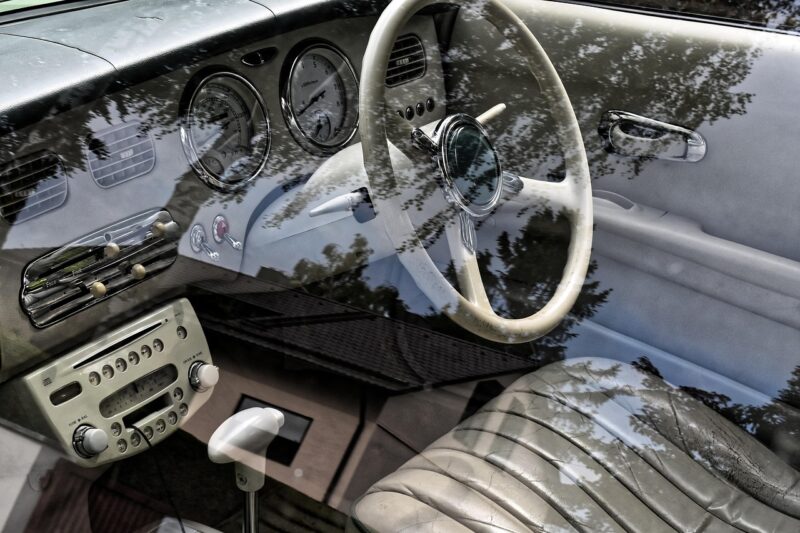The Future of Car Interiors: How Technology Is Making Rides Smarter
November 11, 2024

As we continue to march forward into the era of smart technology, the automotive industry is not left behind. The car interiors of the future are rapidly evolving, with tech innovations redefining how we interact with our vehicles, enhance our driving experiences, and optimize our comfort. In this article, we’ll explore the various ways technology is transforming car interiors into intelligent spaces that prioritize comfort, safety, and connectivity.
1. Smart Cockpits: The Evolution of Control Panels
The traditional dashboard is undergoing a massive transformation into what is now referred to as a smart cockpit. Gone are the days of simple instrumentation; today’s dashboards feature advanced displays that provide an unobtrusive yet comprehensive view of information.
Smart cockpits utilize high-resolution touchscreens, voice recognition, and haptic feedback, allowing drivers to interact with their vehicles in ways that were previously unimaginable. Key features include:
- Customization: Drivers can tailor their display settings to prioritize the information they find most useful, from navigation to speed and fuel efficiency.
- Integration with Mobile Devices: Seamless connections with smartphones and tablets via platforms like Apple CarPlay and Android Auto allow for easy access to apps and music while driving.
- Driver Assistance Features: Enhanced safety with features such as lane-keeping assist, adaptive cruise control, and collision detection are now integrated within the cockpit display.
Such advancements not only enhance the driving experience but also contribute to safer driving conditions.
2. Personalized Environmental Controls
One of the most impressive lateral advancements in modern car interiors is the way climate control and interior environments are now personalized. The future of car interiors uses technology to analyze preferences and deliver tailored comfort to drivers and passengers. Consider the following:
- Mood Lighting: Ambient lighting can be adjusted according to the mood of the driver or the time of day, contributing further to a pleasurable driving experience.
- Climate Regulation: Advanced sensors can detect body temperature and adjust the climate control system accordingly, ensuring each passenger is comfortable regardless of personal preferences.
- Air Quality Monitoring: Future cars will monitor cabin air quality and adjust filtration systems automatically, reducing allergens and harmful particles for optimal passenger health.
Such personalization not only enhances comfort but ensures passenger well-being throughout the ride.
3. Enhanced Connectivity: The Internet of Things (IoT) in Cars
Connectivity is at the heart of modern technology, and the automotive industry is no exception. The Internet of Things (IoT) is leading the charge, allowing vehicles to communicate with each other and the surrounding environment. This leads to a safer and more efficient driving experience. Here’s how IoT is shaping the future of car interiors:
- Vehicle-to-Vehicle (V2V) Communication: This technology allows vehicles to exchange information about speed, traffic conditions, and hazards on the road, improving safety and reducing accidents.
- Vehicle-to-Infrastructure (V2I) Communication: Cars can interact with smart traffic signals and road signs to enhance navigation and optimize traffic flow, making commutes quicker and more efficient.
- Over-the-Air Updates: Car manufacturers can remotely update software and features, ensuring vehicles are always equipped with the latest technology without the need for service center visits.
The integration of IoT enhances not just convenience but greatly emphasizes safety and efficiency on the road.
4. Autonomous Driving and Safety Features
With the rise of autonomous vehicles comes a significant change in how car interiors are designed. Future vehicles are being engineered around the driver’s new role as a passenger, creating interiors that prioritize relaxation and productivity. Notable features include:
- Adjustable Seating Arrangements: Seats will be able to rotate or reconfigure depending on the driving mode, turning the interior into a mobile office or lounge space during autonomous travel.
- Safety Innovations: Enhanced surveillance systems can monitor passengers and the surroundings, ensuring maximum safety in both autonomous and manual driving modes.
- Emergency Protocols: Advanced software will be in place to take over control in case of emergencies or real-time threats, assuring peace of mind to passengers.
With autonomous driving on the horizon, the designs and functionalities of car interiors must adapt to new safety standards and passenger needs.
5. Sustainable Materials and Eco-Friendly Innovations
As environmental concerns rise, the automotive industry is striving to incorporate sustainable practices into car design. The materials used in car interiors are evolving significantly, contributing to ecological sustainability. Some examples include:
- Recycled and Alternative Materials: Manufacturers are increasingly using recycled plastics, natural fibers, and other biodegradable materials in car interiors to reduce environmental footprints.
- Energy-Efficient Manufacturing: Advances in production methods aim at minimizing waste and energy consumption during the manufacturing process, further contributing to sustainability efforts.
- Long-Lasting Durability: Eco-friendly materials often emphasize durability, leading to longer product lifecycles, reducing the need for replacements—and consequently less waste.
By adopting sustainable practices, the automotive industry is aligning itself with contemporary values while meeting consumer demands for eco-friendliness.
Conclusion
The future of car interiors is set to revolutionize how we perceive transportation. As technology continues to advance, we will see smarter cockpits, personalized environments, and enhanced connectivity that prioritize both comfort and safety. While the design upgrades remain impressive, they also reflect a greater focus on sustainability, ensuring that as we evolve in our approach to vehicle design, we do so with our planet’s future in mind. Thus, the next time you slide into a car, remember that you are entering a fusion of innovation and comfort, redefining the art of travel for generations to come.







